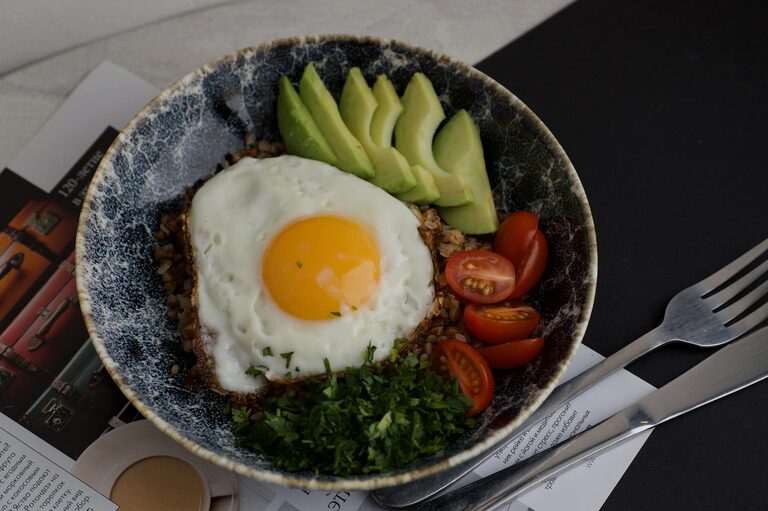Planning balanced meals can sometimes feel overwhelming, especially with busy schedules and endless food choices. However, creating nutritious and satisfying meals doesn’t have to be stressful. With a few straightforward strategies, you can enjoy wholesome meals that fuel your body and fit smoothly into your lifestyle.
In this guide, we’ll explore simple steps to help you plan balanced meals without the hassle. Whether you’re new to meal planning or want to simplify your routine, these tips will empower you to eat well and feel great.
What is a Balanced Meal?
Before diving into meal planning tips, it’s helpful to understand what makes a meal balanced. A balanced meal typically includes:
– Protein: Supports muscle repair and keeps you feeling full. Examples include lean meats, beans, tofu, fish, or eggs.
– Carbohydrates: Provide energy, especially from whole grains, fruits, and vegetables.
– Healthy fats: Important for brain health and nutrient absorption, found in avocados, nuts, seeds, and olive oil.
– Fiber and vitamins: Predominantly from fruits, vegetables, and whole grains.
Each meal doesn’t need to perfectly hit every category every time but aiming for variety across your day will help ensure you get the nutrients you need.
Step 1: Start with a Simple Meal Plan Template
Creating a meal plan doesn’t have to be complicated. Begin with a basic weekly outline:
– Breakfast: Focus on protein + fiber (e.g., oatmeal with nuts and berries, or eggs with whole grain toast).
– Lunch: Incorporate lean protein, vegetables, and a complex carbohydrate (e.g., grilled chicken salad with quinoa).
– Dinner: Balanced plate with protein, veggies, and a healthy fat source (e.g., baked salmon with steamed broccoli and a side of brown rice).
– Snacks: Healthy options like yogurt, fruit, or nuts.
Having a template helps reduce decision fatigue and keeps your meals balanced throughout the week.
Step 2: Keep a List of Favorite Quick Meals
Create a go-to list of meals that are both balanced and easy to prepare. These meals will serve as your staples when time is tight. Examples include:
– Stir-fried veggies with tofu or chicken over brown rice
– Whole wheat pasta with tomato sauce and a side salad
– Smoothie bowls with spinach, banana, nuts, and protein powder
– Buddha bowls with quinoa, chickpeas, avocado, and roasted veggies
Having favorites on hand makes meal prep less daunting.
Step 3: Make Grocery Shopping Stress-Free
A stress-free meal plan is supported by organized grocery shopping. Here’s how to streamline this step:
– Plan your shopping list around your meals: Write down ingredients for each meal and cross-check to avoid duplicates.
– Shop seasonally: Seasonal produce is often fresher, more affordable, and more flavorful.
– Consider batch buys: Purchase items you use frequently (like grains, beans, and frozen veggies) in bulk to save time and money.
– Stick to the perimeter: Fresh produce, proteins, and dairy are usually found on the store’s outer aisles.
A well-planned grocery list minimizes last-minute runs and impulse purchases.
Step 4: Prep Ingredients in Advance
Batch prepping saves time and stress during busy weekdays. Try:
– Chopping vegetables and storing them in airtight containers.
– Cooking grains like rice or quinoa ahead of time.
– Portioning out snacks such as nuts or cut fruit.
– Marinating proteins earlier in the day or the night before.
Even 30 minutes of meal prep can make a big difference in how quickly you can assemble meals later.
Step 5: Mix and Match Ingredients
One key to stress-free meal planning is flexibility. Use ingredients interchangeably to keep meals interesting without needing new recipes every time.
Example: If you have grilled chicken, use it in a salad one day, a wrap the next, and a stir-fry later in the week.
By thinking in terms of core ingredients rather than fixed recipes, you reduce cooking time and decision-making pressure.
Step 6: Listen to Your Body
Balanced meals are important, but so is tuning into your hunger and fullness cues. Don’t be afraid to adjust portions or meal times based on how you feel.
Remember, it’s okay to enjoy treats occasionally — balance is about overall habits, not perfection.
Step 7: Use Helpful Tools and Apps
If you want extra support, many apps can simplify meal planning by helping create shopping lists, suggesting recipes, or tracking nutrition.
Popular options include:
– Meal planning apps like Mealime or Paprika.
– Grocery list apps such as AnyList.
– Recipe websites with filters for dietary preferences.
Choose tools that feel intuitive and supportive to make cooking easier and more enjoyable.
Simple Balanced Meal Ideas to Get You Started
Here are some quick examples to inspire your weekly plan:
– Breakfast: Greek yogurt with sliced banana, chia seeds, and a drizzle of honey.
– Lunch: Turkey and veggie wrap with whole wheat tortilla and a side of carrot sticks.
– Dinner: Lentil stew with a side of roasted Brussels sprouts.
– Snack: Apple slices with almond butter.
These meals cover all the basics — protein, healthy fats, fiber, and vitamins — while being simple to prepare.
Final Thoughts
Planning balanced meals doesn’t have to be a source of stress. By creating a simple structure, prepping in advance, and keeping your favorite meals handy, you can enjoy nutritious food without fuss.
Start small, be flexible, and remember that the goal is to nourish your body in a way that feels manageable. With practice, meal planning can become a natural and even enjoyable part of your lifestyle. Happy cooking!


